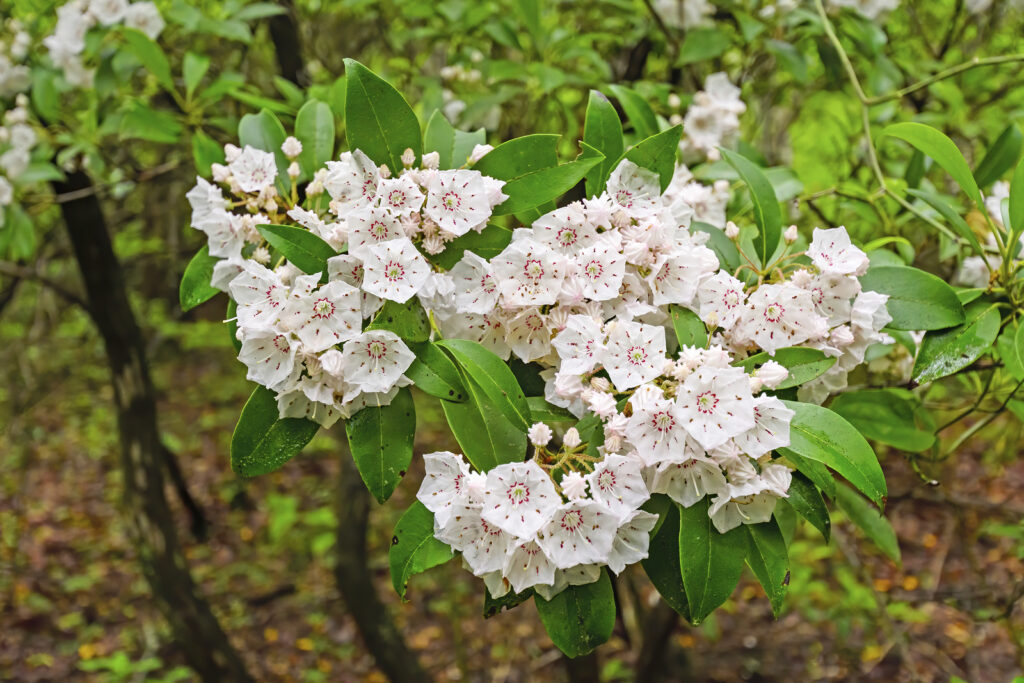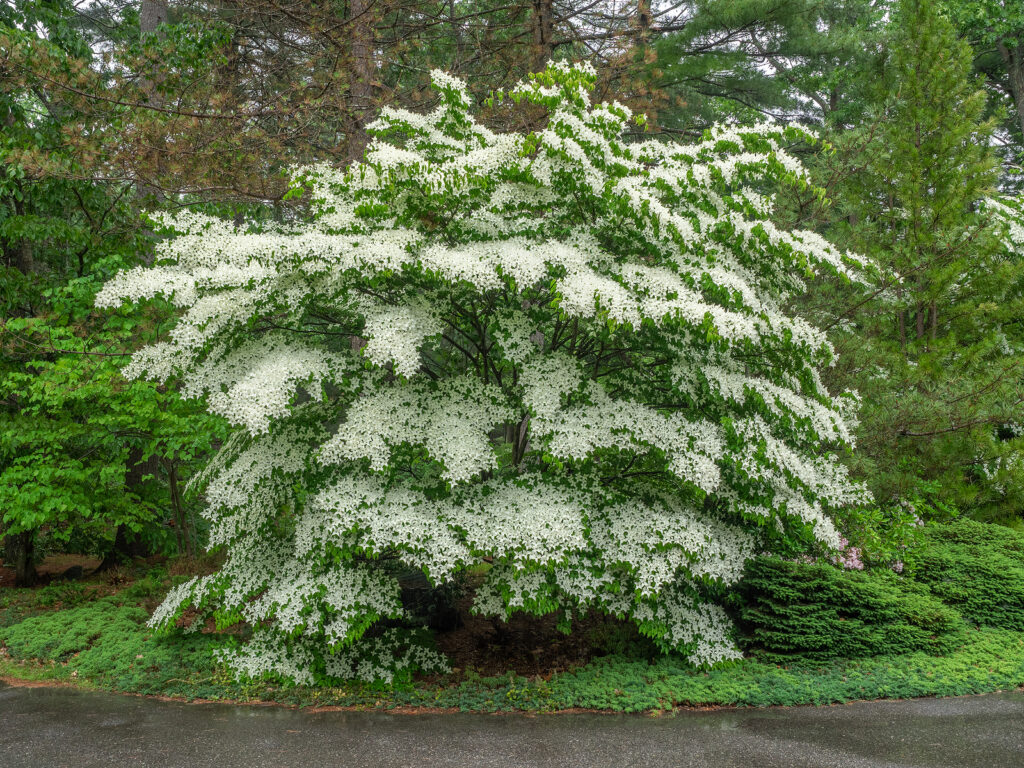Native plants are plants that are native to your region; that means they naturally thrive in your climate.
Gardening with native plants is an easy solution to growing a garden; the plants in the garden want to grow where you live.
Native plants are adapted to year-round high and low temperatures; they are adapted to the soil and as well as drought and natural rainfall. Native plants can also tolerate pests and diseases that attack plants in your region.
Gardening with native plants also solves garden design challenges. Your garden can simply reflect the larger landscape of your region.

Discovering native plants
The best way to discover and get to know the native plants of your region is to visit a nearby garden center ask. Most garden centers will a section just for natives. You can also visit a nearby botanical garden; there will be a native plant section there with plants labeled. Take photos and notes. Most natives and most counties have native plant societies; many have yearly native plant sales.
Native plants will include trees, shrubs, perennials, vines, annuals, and bulbs. Some will grow in the cool time of the year; some will grow in the warm time of the year.
Once you have a list of favorites, you can design your garden just as you would using non-native plants. Actually, the design will likely be easier because natives will thrive in the native soil, and with the rainfall; you will not need to amend the soil or install an irrigation system.

Designing with native plants
Here are a garden design tips using natives:
- Know each plant’s height and spread at maturity and plant accordingly. The native should be able to sprawl and grow to maturity as they would in nature.
- Know each plant’s light needs; you must group shade plants in a shady location and group full sun plants in a sunny spot.
- Know the water needs of each plant; some may be adapted to boggy or riparian areas that need more moisture; others will want mostly dry soil.
- Native plants lend themselves to naturalistic or informal groupings as you would see in nature; natives commonly do not lend themselves to a formal, geometric design.
- Be aware of local ordinances or homeowner association rules regarding the upkeep of plants, mowing, and yard care. Some native trees and shrubs can get a bit rangy, native grasses can grow tall. Make sure your use of natives is acceptable to neighbors.
Native plant terminology for the gardener
Here are some basic terms you should be familiar with if you decide to grow native plants and include native plants in garden design:
- Native plant: a plant that is indigenous to a region; it has grown in this place for centuries; it is adapted to the extremes of temperature, rainfall, humidity, and drought.
- Hybrid of a native plant: native plants can be hybridized; plant growers will create cultivars that are resistant to some pests and diseases; natives can be hybridized for larger blooms and longer bloom times. Hybridized native plants will perform as well and perhaps better than natives.
- Wildflowers: this is a loose term; it may include native plants—usually annuals, but it may also include flowers that are non-native but have adapted to the region. Some wildflowers may not be native to the region but they are native to other parts of the world with similar climates.
- Naturalized plants: these are plants that will grow in your climate and region without special attention; they may or may not be natives; these plants have adapted to the region and commonly reproduce and spread with no assistance from gardeners.
- Invasive plants: these are naturalized plants that grow rapidly and may crowd out native plants; they are adapted to the region and readily reproduce and spread to the detriment of natives and ornamental non-natives.

Plants native to North America
Here are annuals, perennials, shrubs, and trees native to North America. Many of these grow in all parts of North America, some are more regional. For a list of natives for your area, visit a nearby garden center, botanical garden, or contact the state or county native plant society. You will likely also find list of native plants for your area online.
Flowers native to North America
| Common Name | Botanical Name | Zones |
| Aster | Aster spp. | 4-8 |
| Bee balm | Monarda didyma | 4-8 |
| Black-eyed Susan | Rudbeckia spp. | 3-10 |
| Blanket flower | Gaillardia spp. | 2-10 |
| Blazing star | Liatris spp. | 3-9 |
| Butterfly weed | Asclepias tuberosa | 4-10 |
| California poppy | Eschscholzia californica | Annual |
| Columbine | Auilegia spp. | 3-9 |
| Coneflower, purple | Echinacea purpurea | 3-9 |
| Coreopsis | Coreopsis spp. | 4-9 |
| Evening primrose, showy | Oenothera speciosa | 3-9 |
| False indigo, blue | Baptisia autralis | 3-9 |
| Goldenrod | Solidago spp. | 4-8 |
| Joe-Pye weed | Eupatorium spp. | 3-10 |
| Penstemon | Penstemon spp. | 3-7 |
| Queen-of-the-prairie | Filipendula rubra | 3-8 |
| Sneezeweed | Helnium autumnale | 3-7 |
| Turtlehead, pink | Chelone lyonii | 3-8 |
| Virginia bluebells | Mertensia virginica | 3-7 |
| Yarrow | Achillea spp. | 3-9 |
Shrubs native to North America
| Common Name | Botanical Name | Zones |
| Plum, American | Prunus americana | 4-10 |
| Rhododendron and azaleas, native types | Rhododendron spp. | 4-10 |
| Bayberry, northern | Myrica pensylvanica | 2-6 |
| Potentilla, shrubby | Potentilla fruticosa | 2-11 |
| Ceanothus | Ceanothus spp. | 8-10 |
| Dogwood, red-osier | Cornus stolonifera | 2-8 |
Trees native to North American
| Common Name | Botanical Name | Zones |
| Birch | Betula spp. | Varies |
| Dogwood | Cornus spp. | Varies |
| Maples | Acer spp. | Varies |
| Oaks | Quercus spp. | Varies |
| Redbud | Cercis canadensis | 3-9 |
| Serviceberry, downy | Amelanchier arborea | 4-9 |
| Tulip tree | Lirodendon tulipifera | 5-9 |
| Yellowwood, American | Cladrastis kentukea | 6-8 |



